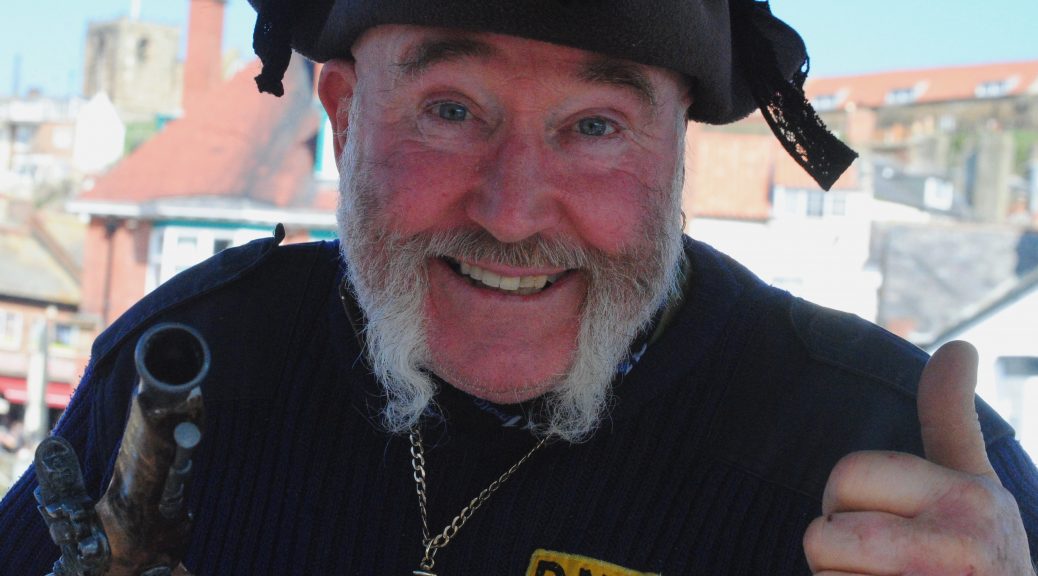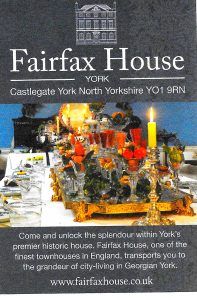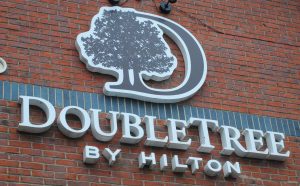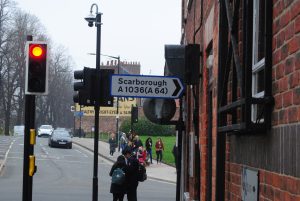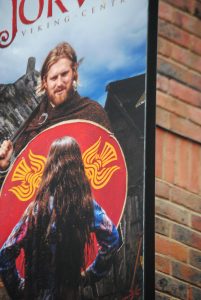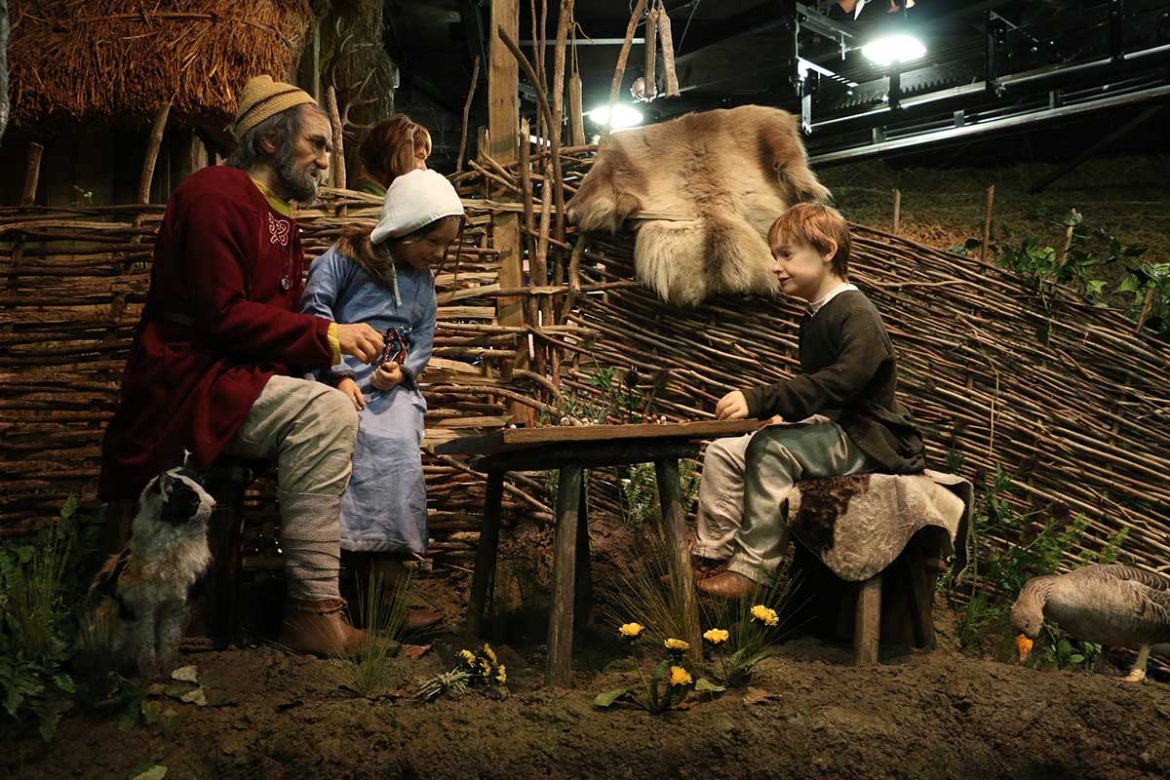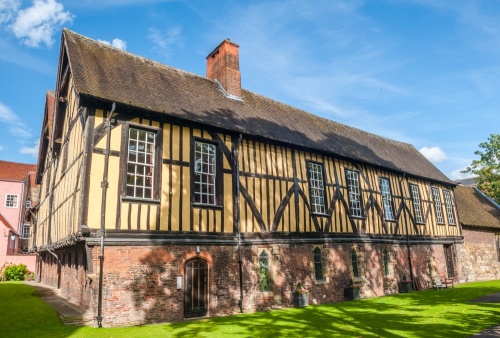10 Alternative Things To Do In York England
The first picture is not from York but was one of the last I took at Whitby—Met this great guy and thought he rated a top spot—-
thanks for making our trip better with laughter and making us feel welcome too.
*****************************************************
York we weren’t able to see this time
Welcome to Fairfax House
*****************************************************
We started our day (our last full one of this trip in York) at our hotel on St. Maurice’s Road Double Tree by Hilton. With it’s great location in central york and only yards from our first destination:
Where once there was a church: St Maurice’s | York Stories
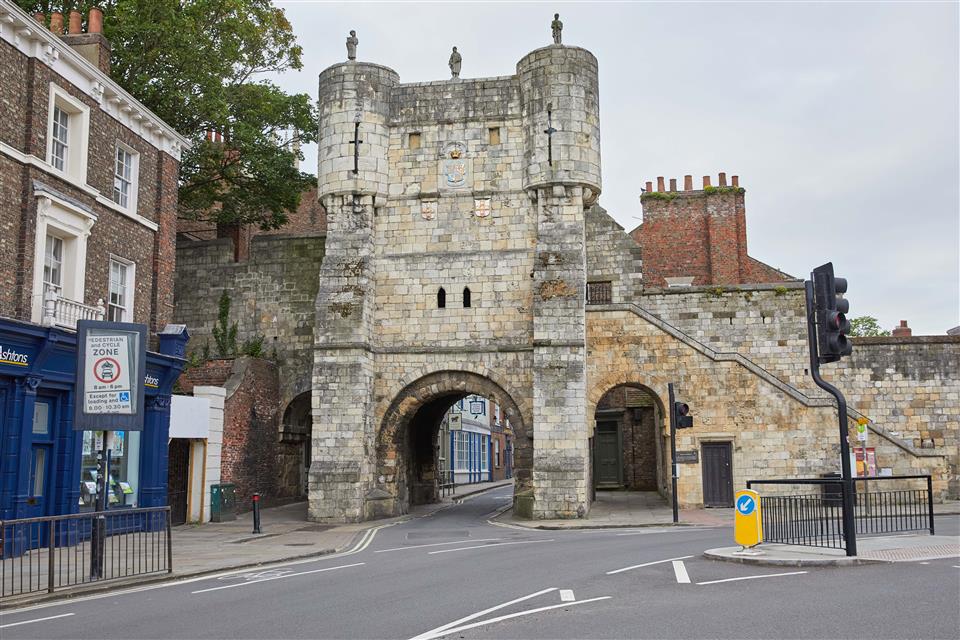
Bootham Bar
Bootham Bar
2-4 High Petergate
Do not enter the opening in the wall—rather turn right and continue until you see the the base of the stairs built into the wall take a left and mount the stairs up to the wall.
A porcullis is on the left (Middle English: from Old French porte coleice ‘sliding door’, from porte ‘door’ (from Latin porta ) + coleice ‘sliding’ (feminine of couleis, from Latin colare ‘to filter’). and a 19th c wall on the right. The window here is the original, as did’t expect attacks from the York side of the bar.
From the top of the steps going up to the bar look down the steps and to the right to see where the wall starts again
Its about 100 meters away from the other side of the road, that York’s corporation built through the walls in 1930s,
York, England Real Diagon Alley Walking Tour 4K | York Gallery to Fossgate St.
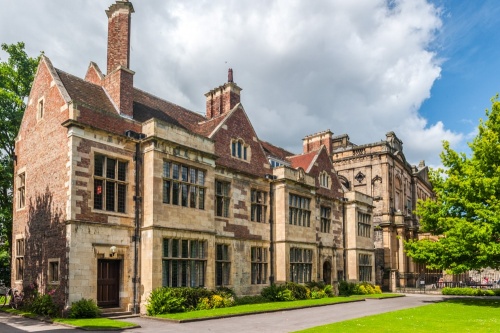
The King’s Manor is to the right of this and was built around the
House of the Abott of St. Mary’s Abbey which
Henry VIII confiscated it in 1538.

Then the Statue of William Etty in the middle of the square
It is said that Etty is shown looking at the bar because he was a leader of the fight to save the walls from destruction by the Corporation and for use as a public path. He is shown painting as he was a professional artist who did paint the wall, but was better known for his nudes.
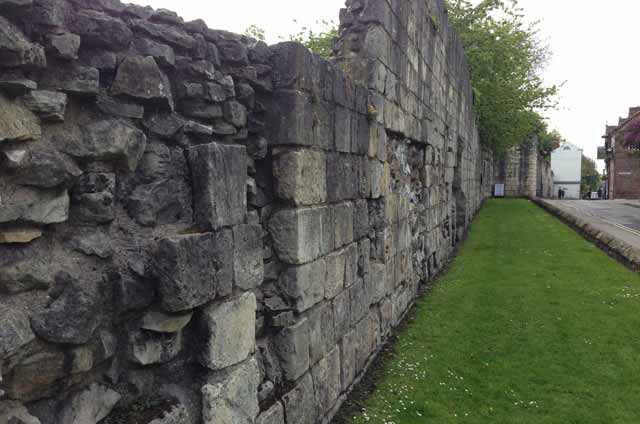
and on the right of the square the defensive walls of St. Mary’s Abbey
If you go the the 19th c slit window you ccan look out into York along Petersgate,
said to be one of York’s best streets which is added to by it being mostly car free, this street actually follows the line of one of the main road running though the Roman Fort, but not quite as staright as it was in the time of Rome.
You are walking on a Victorian built wall and beside battlements that were built at the same time.
But the majority of the walls are basically medieval. They are built on earth ramparts that were started by the Romans and then grew to cover what was left of those originals.
About 100 ft before you get to
The Robin Hood Tower
The Robin Tower is Victorian and the small slit windows you see along here would never accommadate the weapons of Medieval England—however the tower does have some items you might be able to use including some benches and a view of the next bit of the wall
(At the angle of the corner) You get your Good first view of the
Minster to the right..
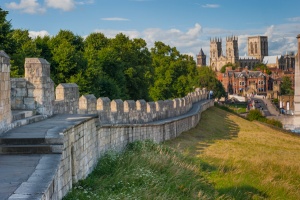
This building took 250 yrs to build so it has windows of all 3 Gothic styles. The “decorated” style of the towers. The simple spear shaped in the center–closest to the wall, are the oldest of the present Minsters and are early English (1220), the gardens below belong to the dean of the abbey who is in charge of the Minster and its rounds.
About 250′ further and you come to some steps which you can access . There’s also another good view of the Minster here.
You can go down to the gardens and then return up the stairs—-or you do the garden another time and continue on the wall If you continue you will come to a 3rd view of the Minster.
The top the next tower is also a Vicorian addition with its small, pretty, but silly when one looks around at it’s location of this tower.
-
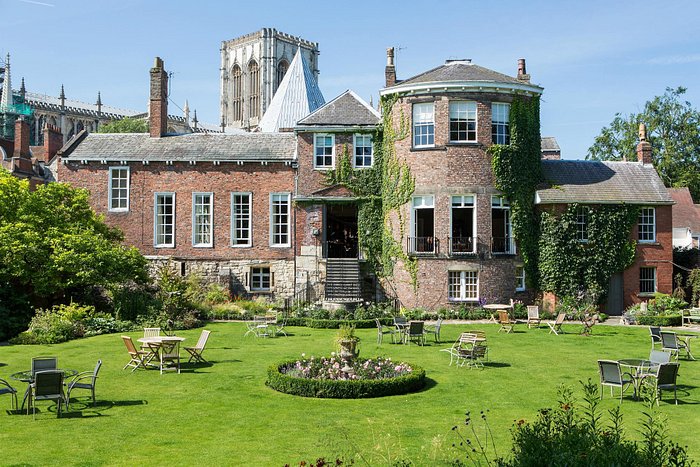
- You’ll soon come to stairs that lead to
- Gray Court, a hotel which usually welcomes non-residents to their garden and palor bar for drinks, teas and light lunches. In the 1880s the owner of the garden reluctantly gave up what they saw as their bits of the wall
- (and a bit of their privacy complete the trail you are on now on)

At the end of the corner you’ll be at Monk’s Bar.
This is one of the four fortified gateways on York’s walls. It was built in several stages starting in the 14th c. when there were threats from a hostile Scotland. The second story dates from 1484 and the reign of RIchard III and had a roofless well enclosed to guard the approach to the main gateway. There was a series of murder holes overhead which allowed the defender to drop missles and the like on the attackers.
As well as being part of the Defenses Monk Bar has also been used as a temporary prison and a police house. It retains two medieval toilets (known as garderobes). The figures on top of the bar are said to represent a man hurling boulders.
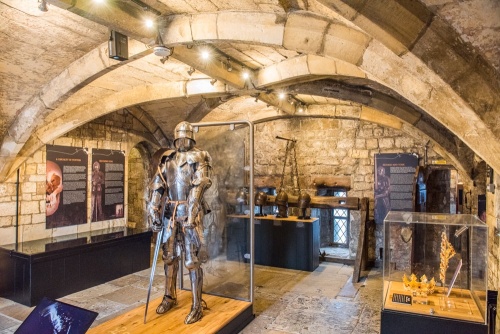 Richard III Experience at Monk Bar (formerly known as the Richard III Museum)
Richard III Experience at Monk Bar (formerly known as the Richard III Museum)
While the bars is mostly 14th century Richard III did have the top part of the chamber here completed in 1484–probably paying for it himself. Now it continues to work for Richard and since the discovery of the king’s body within the last few years the museum is now the Richard III experience.
There use to be a Heny VII museum at Micklegate Bar but that has been permanently closed.
History of York
The Tudor Troubles
and
Impact of the Reformation
Return to Bootham Bar where you started.
Named “Eboracum” in Latin—York was at one time the military capital of Roman Britain
Museum Gardens in 2000 from a hot-air balloon
and traces of Roman garrison buildings are visual along with other palaces in the Yorkshire Museum Gardens.
Now head southeast on High Petergate toward Duncombe Pl
The foundation of York Minster rises from the remains of the principal Roman Garrison headquarters
Continue onto Low Petergate
Following the fall of the Roman Empire in the 5th c an Anglo Saxon town grew up over the ruins of the Roman Fort.
Turn right towards the Shambles
On Christmas Eve 627 AD the North Thursston King Edwin introduced Christianity to the area when he was baptised in a little wooden church in York
Slight left onto the Shambles
The Shambles name comes from the butchers that were so prominent the street and means slaughterhouse or meat market and if you can imagion that in the days of lack of hygiene this mondern street left much to be desired for those of us that live in the present days. There would have been all kinds of animal remnants thrown into it. On some properties even today you can see the meat hooks outside. Meat is still sold in the Shambes, although it mainly comes in pasties! Other shops in today’s street have fudge makers, gift shops and an Earl Grey Tea Rooms where you can sit under the oak beams and sip your teas surrounded by tapestries.
Head South on the Shambles
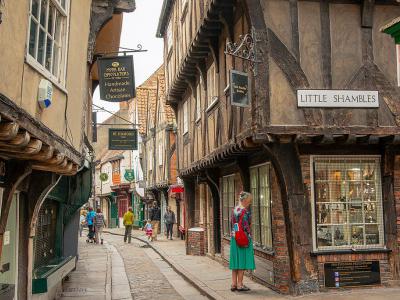
Europe’s oldest shopping street was mentioned in the Doomsday Book of 1086 and is best known for its period properties that almost touch across the street as the levels go up.
Turn right onto Pavement
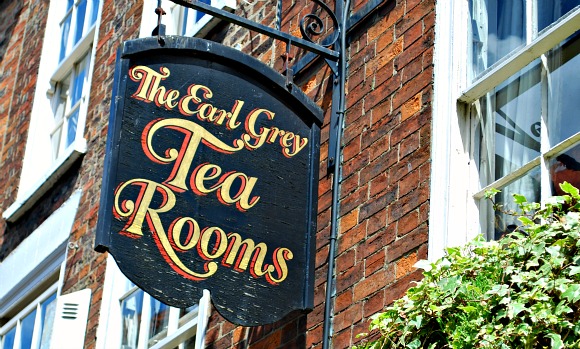
Hundreds of years ago these were ordinary homes lived in by people some professional—today it’s streets cater to visitors. It gets busy as the day goes on and is also tiny so it’s a bit limiting at its peak times.
Turn left onto Coppergate
The walls you just recently walked were once just earth rampats put up by the Viking who once ruled her, to repel raiders.
Turn left onto Coppergate Walk
The sights, sounds and even the smell of the Viking Age are brought to life as you enter this next destination which takes you back 1,000 years supported by the findings at the Coppergate dig.
Destination will be on the right
Jovik Viking Centre
This Viking museum has rides and reproduction of the Viking dwellings and camps—complete with smells and sounds—Oh and the people depicted are computer generated repoductions of people who once lived here develop from the skeltons and skulls found at the digs
When you leave Jorvik head southeast on Coppergate Walk toward St. Mary’s Square
The Merchant Adventure Hall is of major importance and is a Grade1 Listed building and Scheduled Ancient Monument.
It was built between 1357 – 1361. Before most of the craft and trade guild’s halls in Britain, making it one of the largest buildings of its kind and date in Britain. It is very unusual to be able to see in one building the three rooms serving the three functions of a medieval guild: business and social in the Great Hall, charitable in the Undercroft and religious in the Chapel.
turn left onto St. Mary’s Square
The Company’s art collection, most of which is on display in the Hall, is a valuable record of York in the past 5 centuries. The walls are hung with pictures (water colors, prints and drawings) portraying the Governors of the Company who were important York citizens as well scenes of York.
Turn Left toward Piccadilly
The Gardens, in comparison to the Hall are a fairly new addition. For centuries the hall was surrounded by houses and hops with a track or road down to the RIver Foss.
Turn left towards Piccadilly
The lower part of the Hall is constructed mainly of bricks from a ruin of a Carmelite Friary that was close by
The Merchants’ Adventurer’s Hall Fossgate, York
When finished here: Head southeast on Coppergate Walk toward St. Mary’s Square
Beware if you’re Scottish (I’m about 60% Scott, 20% Norse and 20% misc—if you visit on a Sunday—there’s a law allowimg Scotts to be shot with a bow and arrow—Oh but relax—there hasn’t been any one doing so for at least the last 20 years,
Turn right onto St. Mary’s Square
Because of the strategic position on the River Cruse York developed during both the Noraman and the Pantagenet times (11th thru 14th century)and became a trade center and a inland port, espically for exporting wool to Europe.
Take a slight turn left onto St Mary’s Square
The Minster (second only to Canterbury Cathedral in the Church of Englands church’s pecking order) is a sign of Yorks wealth.
Turn right on St Mary’s Square
Archbishop William Fitzherbert who became a saint in 1224 and 100 yrs later he got a shrine thanks to another Archbishop who gave 20 pounds to create it.
Continue onto Costle Walk
But 20 pounds went further back then and it was one of the largest shrines in England rivaling even Thomas Becket’s at Cantebury.
Turn right toward Tower St.
In fact it went along with the supply and demand as when it became extremely busy a second shrine was created in 1472.
Turn left in 98 feet
It is belived that other shrines were dismantled during the reformation, no later than 1541. It is also said that they were broken up ad buried along this court as in 1835 sections of both shrines were uncovered and later in 1928 more pieces were found in an excavation. And no one would be suprised if more pieces were found below the houses along the court.

York Castle Museum is housed in a former prison. It has over 400 years of York’s history on display.
The home of Kirkgate, a reconstructed Victorian street,

The museum also has other period rooms including a Victorian parlor, Jacobean dining room and a 1950s kitchen. You can even visit the cells where it is speculated that Dick Turpin was once held. The most recent addition to the new exhibition 1914: When the World Changed Forever– opened to commemorate the centenary of the outbreak of the Great War.
Exit the castle
and go North toward York Castle Street
Turn right on York Castle go about 95 ft Stop at the bottom of the stairs going up a hill with a small fort at top
The building at the top is the ruined Norman keep at the center of York Castle and like a lot of history this tower’s name is named from one of its commanders but was not named for him of what he did—but whether was punishment of those deeds.
Roger de Clifford was hanged here for treason back in 1322.
Ok climb on up those stair but use care they are steep and takes a bit of effort to get there.
Stop half way up to catch some breath
Before the tower got its name this small area was the site of even worse loss of life. One of the worst anti-Semitic massacres of the Middle Ages took place in York in 1190. The city’s entire Jewish community was trapped by an angry mob outside this tower.
Complete your climb to the tower site on the hill top.
Clifford’s Tower
Tower St., York Y01 9SA UK
On March 16th 1190 a wave of anti-Semitic riots culminated in the massacre of an estimated 150 Jews — the entire Jewish community of York–who had taken refuge in the royal castle where Clifford’s Tower now stands. The Chronicier William of Newburgh described the rioters as York acting “without any scruple of Christian conscientiousness” in wiping out the Jewish community.
Accounts of this time can be found in the Chronicies of the Abbey of Meaux in East Yorkshire, and Roger of Howden
Go ahead and explore the tower then return to the head of the stairs
Anti Semitic feeling was running high throughout western Europe in the 12th c, stoked by the Christian fervour of the Crusades, that directed aggression against Jews across England, France and Germany as well as against Muslims in the Holy Land.
England’s new king Richard I was infact about to set off on a Crusade himself. Rioting had spread throughout England since proinent Jews, including Benedict of York, had been denied entry to King Richard I’s coronation banquet in 1189. Benedict was the wealthiest Jew of York and he was mortally wounded in the rioting at Westminster.
Return back down to the street
The Jews were officially protected by the king as his feudal vassals and sought protection in the royal castle, barricading themselves into the wooden keep. It is said that the rioters were egged on by members of the local gentry who saw this a good chance to wipe out the extensive debts they owed the the Jewish money-lenders in the city.
Head Southwest toward York Castle
Turn left at York Castle
In 98 ft turn left
– Many members of that community chose to commit suicide rather than be murdered or forcibly baptised making them Christain by the attackers.
-the men killed their women and children and then set the wooden keep that set then where the stone one is now—becoming martyrs rather than being force to give up their faith.
In 20 feet turn right
But Richard I did not forget that these people were under his protection and an inquest was held and the city received a heavy fine, but unfortunately by that time those that had instigated the whole thing had escaped.
Turn left onto Piccadilly
Turn right onto Pavement
Then Left into the Shambles
and pick a place to have dinner before returning to your hotel room
15 Things To Do In York, England | UK Travel Guide YouTube
